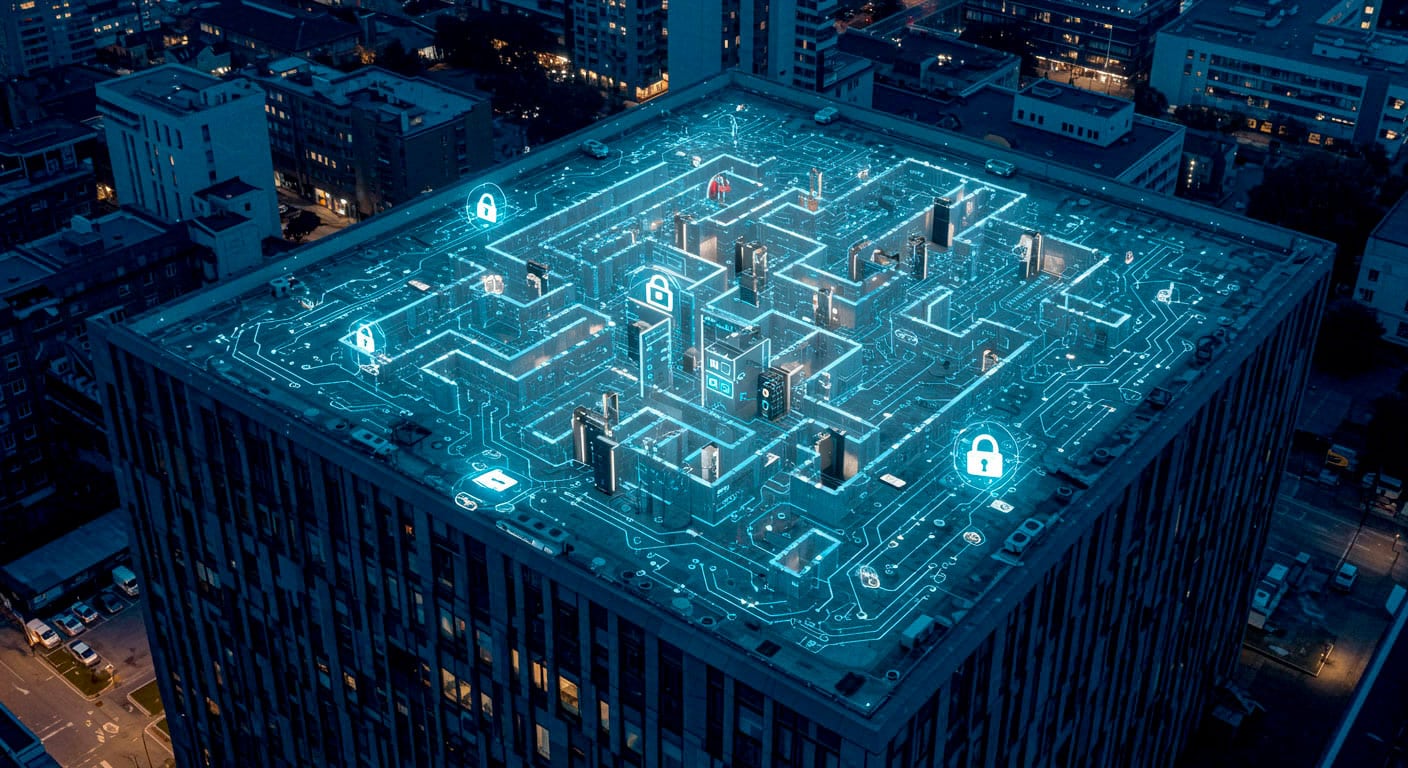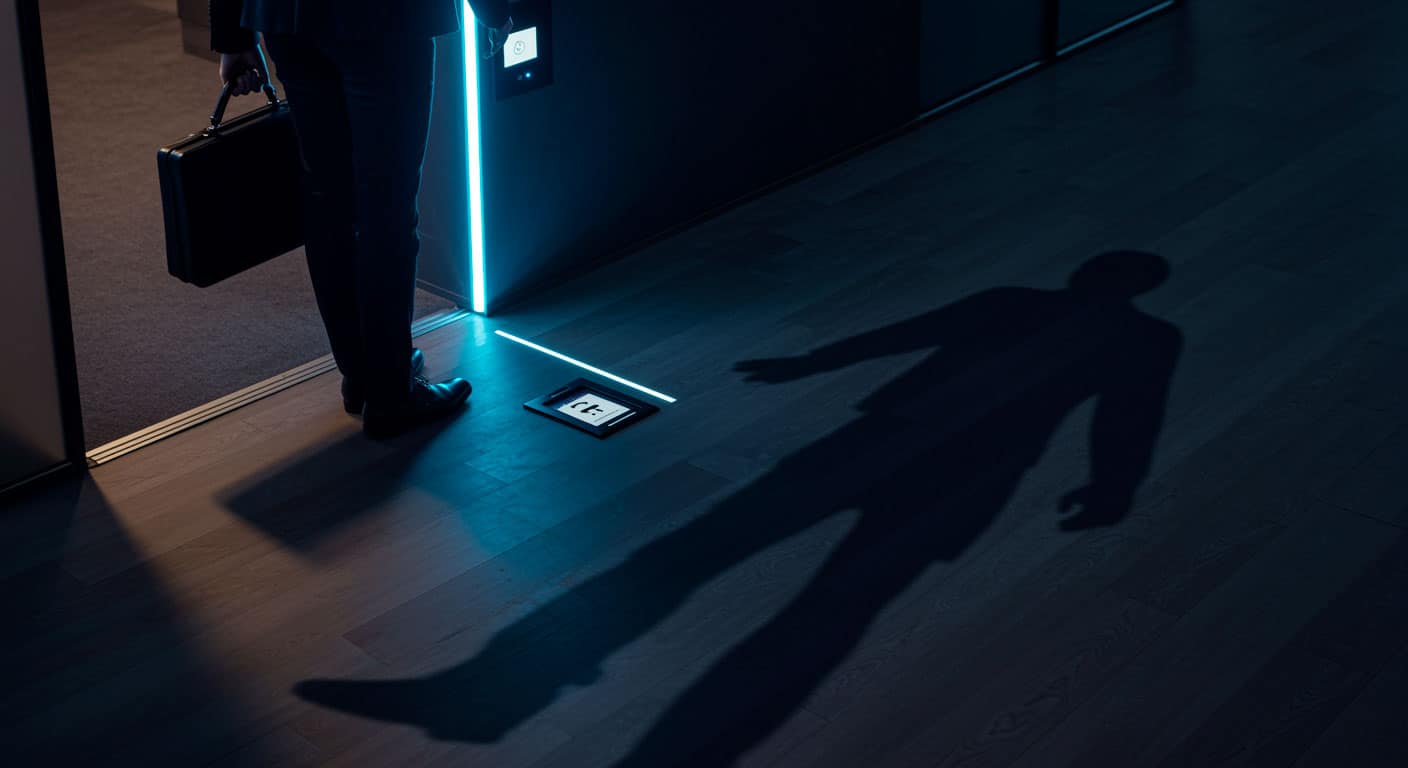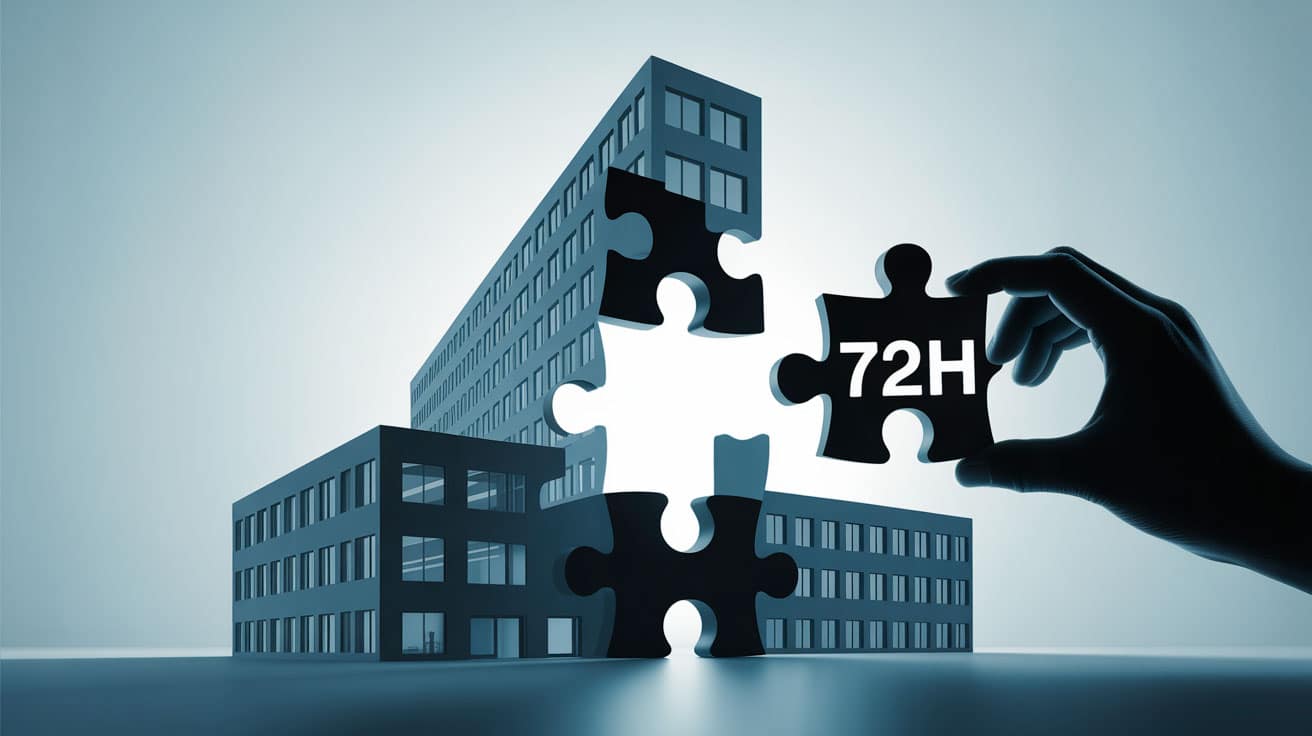Smart buildings are redefining the way we live and work: automation systems, IoT, artificial intelligence and sensors are making buildings more efficient, sustainable and comfortable. But this transformation brings with it new surfaces of risk. When
What is a Smart Building
A Smart Building is a building with integrated intelligent systems:
- Access automation (badges, biometrics, mobile access).
- Energy and environmental management (lighting, air conditioning, air quality).
- Intelligent video surveillance (video analytics, anomaly recognition).
- IoT and sensors for predictive maintenance, space occupancy, safety.
- Centralization platforms that collect and analyze data in real time.
Opportunities for companies and facility managers
Smart buildings are not only a technological evolution, but also a value multiplier.
- Energy efficiency and sustainability: cost reduction and contribution to ESG goals.
- Comfort and productivity: safer, healthier and more personalized work environments.
- Space optimization: real-time monitoring to manage occupancy and maintenance.
- Event responsiveness: systems that report anomalies and initiate automatic procedures (e.g., closing gates, guided evacuations).
Emerging vulnerabilities
Complexity brings with it new surfaces of attack and risk.
-
Weak integration between systems
Often each technology is managed by different vendors without centralized coordination. This results in operational flaws and lack of accountability. -
Dependence on connectivity
A power outage or cyber attack can shut down critical systems (access, air conditioning, video surveillance). -
Evolved insider threat
Employees or vendors with privileged access can exploit vulnerabilities to act undisturbed. -
Regulatory complexity
GDPR, biometrics compliance, workplace safety: convergence requires legal attention and solid governance.
Best practices for combining innovation and security
-
Integrated risk analysis
Not just IT, not just facilities: you need a single view of risk that includes physical assets, people, data and business continuity. -
Centralized governance
A single point of contact to coordinate suppliers, technologies and personnel, reducing friction and dispersion. - Security by design
Security should not be added after the fact: it should be designed from the beginning, with interoperable and tested systems. -
Continuing education
Personnel must know the procedures and how to respond: the smart sensor is not enough if human response is lacking. -
Periodic Assessments
Cyclic audits to update procedures, test SLAs, and ensure that technology keeps up with evolving threats.
The strategic role of SSI
For medium and large companies, the greatest risk is fragmentation: many suppliers, many systems, little integration.
SSI stands out because:
- It is the single point of contact for the physical security chain, with dedicated coordinators and small teams.
- It operates a network independent of supervisory institutions, ensuring super partes choices.
- It integrates technology, physical garrison and procedures, ensuring SLAs in excess of 96% and measurable efficiency recoveries.
- Supports clients with a facility security management approach, transforming security from a cost to a strategic lever.
Conclusion
Smart buildings represent the future, but the future must be governed.
A smart building can become a “digital fortress” or a “house of cards,” depending on how physical security is handled. Integrated vision, centralized governance and the ability to anticipate vulnerabilities make the difference.



